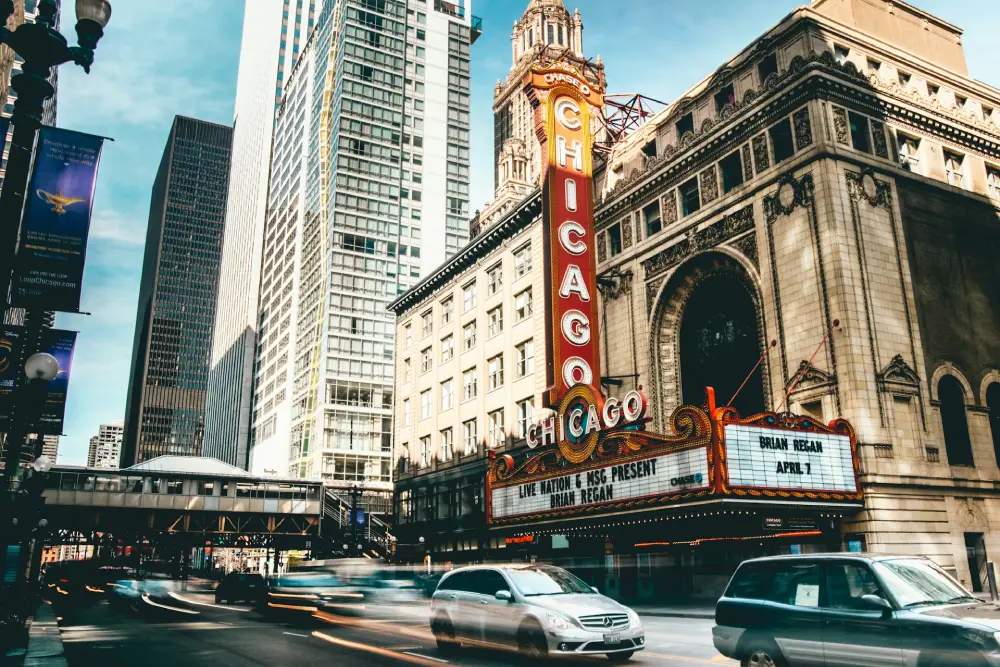Yesterday, after our lovely Austrian breakfast we went downtown to the Chicago Cultural Center, the main downtown information hub for tourists, to ask some questions about the Pullman Historic District, a planned industrial community, built in the 1880s by industrial magnate George Pullman, creator of the famous Pullman sleeper cars. We figured this would be an interesting place to visit since it brings together architecture, social and industrial history, and it would really give us insight into one of the most interesting personalities of Chicago’s history.
To get more information about this neighbourhood we talked to one of the volunteer greeters who staff the Chicago Cultural Center and offer their local expertise to visitors free of charge. The Chicago Greeter program today offers 150 greeters speaking 20 languages and the Greeter program is one of the best ways of getting to know the city through the eyes of a local resident.
As a matter of fact, I had registered electronically for a Chicago Greeter Tour prior to my departure, but something had gone wrong with my registration and as a result I was not assigned a greeter. The good thing is that the City of Chicago also offers “InstaGreeters” – local volunteers / experts who take people on downtown walking tours without the necessity of a prior registration.
This is how we happened upon our very own personal InstaGreeter tour: Chicago Greeter and local expert Don talked to us a bit about the Pullman Historic District, but the more we talked, and the more he saw that we were really interested, he asked us whether we wanted a 20 minute tour of the Chicago Cultural Center. Considering that this is a Chicago landmark we readily agreed.
The Chicago Cultural Center was originally dedicated in 1897 as the city’s original Public Library. It is an impressive limestone-faced building with intricate details, marble staircases, patterned ceilings, beautiful floor mosaics and two impressive stained glass domes. The cupola on the south side of the building is the world’s largest Tiffany stained-glass dome.
Today the Cultural Center houses one of the city’s Visitor Information Centers , various galleries, exhibition and meeting spaces, the Landmark Chicago Gallery which displays photographs from the permanent collection of Chicago landmarks, the 294-seat Claudia Cassidy Theater as well as the Studio Theater and various other facilities. You can even get married inside the Chicago Cultural Center.
Designed in the beaux-arts style by the Boston firm Shepley, Rutan and Coolidge, the Chicago Cultural Center was completed in 1897 and dedicated as the city’s original Chicago Public Library. Completed at a cost of nearly $2 million, this remarkable monument was inspired by the neo-classical style of the World’s Columbian Exposition held in Chicago in 1893.
To start off, Don told us that the name of the city of Chicago is an Indian word for “stinky onion swamp”. He also explained that Chicago is a city of superlatives: 3 of the world’s 10 highest buildings are located here. Chicago is also widely considered to be the birthplace of modern architecture and a living museum of architecture, showcasing some of the world’s most famous architects including Frank Lloyd Wright, Daniel Burnham, Louis Sullivan, Mies van der Rohe and Frank Gehry.
Chicago likes to do everything big. The world s largest public library is located here: the Harold Washington Library Center houses 2 million books. Chicago is also home to the largest building in the United States (excluding the Pentagon): the Merchandise Mart has 90 acres of floor space, housed in an Art Deco landmark. Buckingham Fountain in Grant Park is one of the world’s largest fountains. Chicago also has the only river in the world that flows backwards. Engineers reversed the Chicago River in 1900 for sanitary purposes. Here’s another interesting fact: Chicago also has the largest Polish population outside of Warsaw.
Our local expert Don took us through the building and showed us the two stained glass domes, the exhibit halls, the photo collection of Chicago landmarks, and to keep going along the line of superlatives, Don gave us a brief synopsis of Millennium Park, located right across Michigan Avenue from the Chicago Cultural Center. The idea for Millennium Park was conceived by famous mayor Richard M. Daley, and with the help of private sector donations Millennium Park has become one of the most impressive outdoor venues anywhere. The project cost $495 million, of which $220 million were financed privately.
Our Chicago Greeter Don, a former vice-president at Motorola, is very knowledgeable about the history of Chicago and very passionate about his city. His pride in his city is obvious, and there is a lot to be proud of. For me, Chicago’s waterfront including Grant Park, the lakefront trail and its beaches are some of the most awesome features of this city. In total Chicago has more than 7300 acres of parkland, 552 parks, 33 beaches, nine museums, two world-class conservatories, 16 historic lagoons, 10 bird and wildlife gardens, and it’s not surprising that Chicago has won numerous awards including “Best City in the World” and other accolades.
With Don’s help we got a great overview of the Cultural Center and a bit of insight into Chicago’s interesting history. It was the perfect preparation for our tour of the Pullman Historic District, an industrial community created by George Pullman, an industrial despot, yet a foresightful social entrepreneur who, according to Don, was universally despised.
Armed with a bit of background knowledge we were looking forward to our exploration of Pullman’s social experiment.

